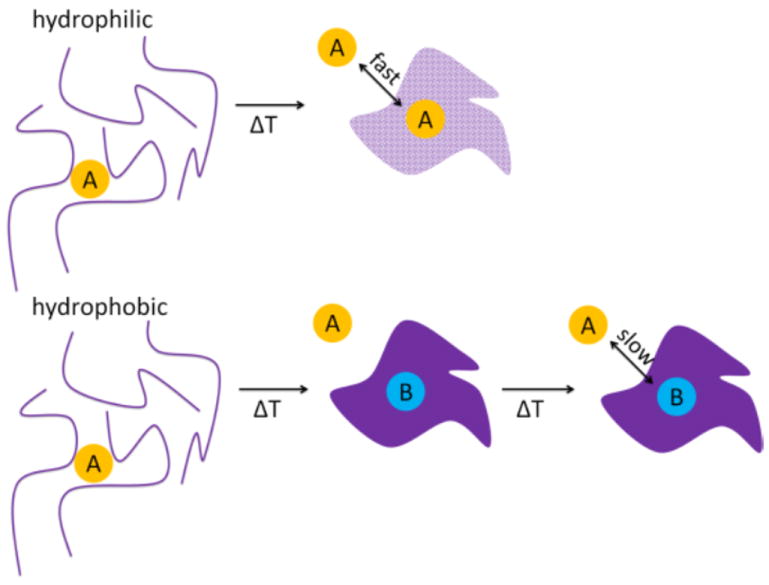Figure 3.

Sketch of the ELP-16-DSA interaction. A and B denote 16-DSA species corresponding to the spectral components A and B. For more hydrophilic ELPs above the LCST, the DSA probes can quickly exchange between ELP-rich and ELP-depleted regions. For more hydrophobic ELPs, DSA probes do not exchange at temperatures slightly above the LCST. At even greater temperatures, the probes start to exchange slowly.
